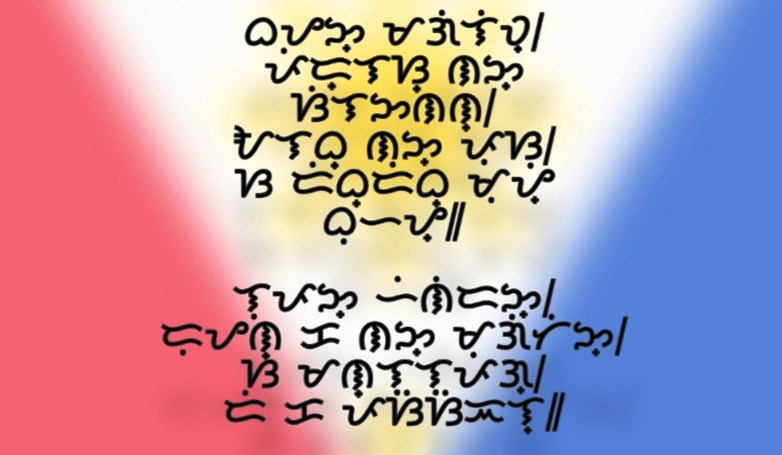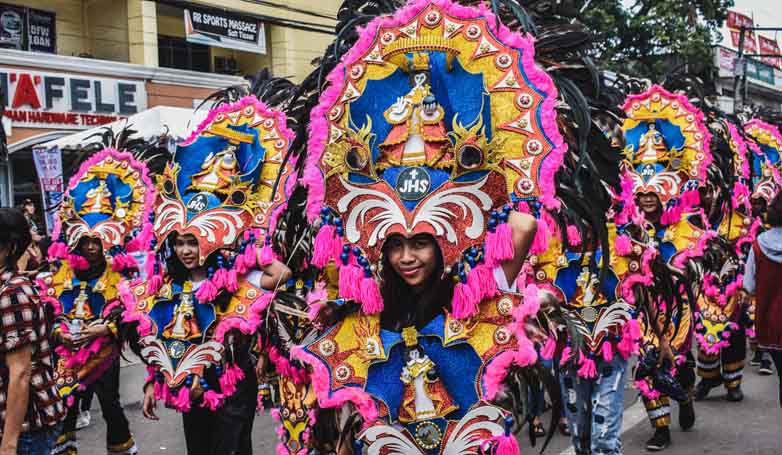A Glimpse into the Ancestral Heartbeat of the Philippines
Ready to embark on a journey through time and tradition? The Philippines, a tapestry of over 7,000 islands, is not just known for its breathtaking beaches and juicy mangoes. Hidden within its lush landscapes lies a rich mosaic of indigenous cultures that have shaped the nation’s soul. From the rice terraces carved by the hands of gods to the rhythmic beats of ancient gongs, discover the enchanting world of the Philippines’ native heritage. Ready or not, let’s dive into the eight sparkling gems of indigenous Filipino culture that will leave your heart singing with the spirits of the archipelago!
1. The Cordillera Rice Terraces

The Cordillera Rice Terraces, emblematic of the indigenous culture in the Philippines, are an outstanding example of an ancient and sustainable agricultural system. Carved into the mountains of Ifugao by the ancestors of the indigenous people over 2,000 years ago, these terraces embody an exceptional technique of retaining walls and water irrigation. The terraces reflect the harmonious relationship between the earth and the ancient practices of the Ifugao people, who are widely recognized for their knowledge of the delicate balance needed to maintain this man-made wonder. Spanning across the slopes, the terraces illustrate the ingenuity of a traditional farming method that remains relevant in supporting biodiversity and local communities.
Trivia
- The Rice Terraces are often referred to as the “Eighth Wonder of the World” for their extensive and impressive landscape.
- They cover approximately 10,360 square kilometers of mountainside and are fed by an ancient irrigation system from the rainforests above the terraces.
- The terraces are part of the UNESCO World Heritage Site, titled “Rice Terraces of the Philippine Cordilleras,” recognized for their cultural and historical significance.
2. The Colorful T’nalak Weave

The colorful T’nalak weave is a vibrant embodiment of indigenous culture in the Philippines, particularly of the T’boli people from South Cotabato in Mindanao. This intricate textile is made from abaca fibers, traditionally dyed with natural materials and meticulously woven into patterns that often convey cultural narratives or aspects of T’boli mythology. The art of T’nalak weaving is not only a craft but also a spiritual process, with weavers known as ‘dream weavers’ since motifs are often inspired by their dreams. The traditional knowledge and practices surrounding the T’nalak Weave are treasured components of the rich cultural tapestry of the Philippines.
Trivia
- Traditionally, only T’boli women are allowed to learn and perform T’nalak weaving, as it is believed to be a task bestowed upon them by Fu Dalu, the spirit of the abaca.
- UNESCO has recognized the traditional T’nalak weaving technique as an intangible cultural heritage, highlighting its importance in the preservation of indigenous cultural practices.
- The patterns and designs of T’nalak are not documented in written form but are instead passed down orally from generation to generation, with each pattern having its own name and story.
3. The Kalinga Tattoo Tradition

The Kalinga tattoo tradition, also known as “batok,” is a centuries-old practice among the indigenous communities of the Kalinga province, showcasing the rich indigenous culture in the Philippines. Rooted in headhunting practices and signifying beauty, social status, and achievements, the intricate, hand-tapped tattoos are not merely decorative but are laden with cultural significance. Renowned for their distinctive patterns, these tattoos are traditionally administered by skilled artisans who are revered as masters of this ancient art form. Today, the tradition is an emblem of identity and pride for the Kalinga people.
Trivia
- The tattoo ink is usually made from a mixture of charcoal and water, demonstrating an impressive resourcefulness and understanding of natural materials.
- The last mambabatok (traditional tattoo artist) of the old generation, Whang-od Oggay, has been instrumental in the revival and continued interest in Kalinga tattooing, earning national recognition.
- Kalinga tattoos are usually applied using a combination of a thorn from a citrus tree and a bamboo hammer, a technique that demands patience, precision, and an extraordinary level of skill.
4. Baybayin

Baybayin is an ancient script indigenous to the Philippines, reflecting the rich cultural heritage of the archipelago before Spanish colonization. This pre-Hispanic syllabic writing system was widely used among various ethno-linguistic groups in Luzon and Visayas for communication and documentation. Its characters, beautifully curved and simple, are evidence of the sophisticated and literate society that existed on these islands. Baybayin is not only a method of writing but also a significant symbol of Filipino indigenous culture, representing a link to the nation’s past and an ongoing interest in preserving and revitalizing traditional arts and identity in the Philippines.
Trivia
- Baybayin is believed to have been derived from the Brahmic scripts of India and first documented by Spanish missionaries arriving in the Philippines in the 16th century.
- Although it fell out of common use due to colonization and the influence of the Latin alphabet, contemporary movements are aimed at reviving Baybayin as a way of fostering Filipino cultural pride and identity.
- The National Museum of the Philippines declared Baybayin a National Cultural Treasure in 2018, marking its importance in the cultural heritage of the Philippines and efforts towards its preservation.
5. The Ivatan Houses of Batanes

The Ivatan houses of Batanes are a quintessential representation of indigenous culture in the Philippines, demonstrating the remarkable ingenuity of the Ivatan people. These traditional dwellings are built to withstand the area’s harsh tropical climate, including frequent typhoons and earthquakes. Constructed from lime, stone, and cogon grass, each home reveals a deep understanding of natural materials and environmental adaptation. Their unique architectural design, characterized by thick walls and thatched roofs, not only protects residents from severe weather conditions but also stands as a living testament to the Ivatan’s harmonious relationship with their rugged surroundings.
Trivia
- Ivatan houses are typically categorized into two types: the stone house known as “Sinadumparan” and the partly stone, partly wood house named “Maytuab”.
- The walls of these traditional houses can be over half a meter thick, providing excellent insulation and stability amidst the challenging weather in Batanes.
- UNESCO has recognized the cultural landscape of Batanes, of which the Ivatan houses are a significant element, submitting it to the tentative list of World Heritage Sites.
6. The Vibrant Festivals

The Vibrant Festivals is a captivating exploration of the indigenous culture in the Philippines, showcasing the incredible diversity and richness of traditions inherent to its various ethnic groups. Through a colorful tapestry of images and narratives, it highlights the most spirited and visually stunning festivals across the archipelago. The reader is taken on a journey through vibrant processions, rhythmic dances, and ancient rituals that are not only entertaining but also embody the deep spiritual beliefs and communal values of Filipino society. This collection celebrates these cultural spectacles that continue to thrive and play a crucial role in preserving the unique heritage of the Philippines.
Trivia
- Many festivals in the Philippines, such as Ati-Atihan and Sinulog, are a fusion of indigenous beliefs and Spanish-influenced Catholic traditions, symbolizing the country’s complex history.
- Festivals like Pahiyas and Kaamulan pay homage to agricultural practices and a bountiful harvest, illustrating the deep connection of indigenous peoples to their natural environment.
- The indigenous costumes worn during festivals are often made of materials sourced from the local environment and bear significant cultural symbols, with each color and pattern telling a story of their tribal history and identity.
7. The Indigenous Cuisine

Indigenous cuisine refers to the traditional foods and culinary practices of indigenous peoples, often passed down through generations and closely tied to local culture, ingredients, and techniques. In the context of the Philippines, indigenous cuisine showcases the rich tapestry of flavors and dishes unique to the many ethnic groups that have thrived across the archipelago. These dishes reflect the rapport with the land and sea, highlighting local produce, foraged greens, and proteins that range from freshly caught seafood to wild game. Root crops, rice varieties, and coconut are staples, often prepared using methods like grilling, boiling, and fermenting, profoundly intertwined with the indigenous culture in the Philippines.
Trivia
- Traditional cooking methods among Philippine indigenous groups often involve bamboo steaming, smoking, and stone grilling.
- Many indigenous Filipino dishes utilize souring agents like tamarind, green mango, and vinegar, showcasing a penchant for tangy flavors.
- Festive gatherings often feature a ceremonial dish called “lechon,” a whole roasted pig, which is a culinary legacy reflecting indigenous, Spanish, and Chinese influences.
8. The Ancient Maritime Culture

The ancient maritime culture is a rich tapestry of seafaring traditions and navigational expertise deeply ingrained in the indigenous cultures of the Philippines. These communities developed advanced techniques for constructing vessels, fishing, and navigating the vast and treacherous waters that surround the archipelago. They also held a complex understanding of the maritime environment, which was crucial for their survival, trade, and communication. This cultural heritage is a testament to the skill and adaptability of the Filipino people, reflecting their deep connection with the sea.
Trivia
- The balangay, a plank-built wooden boat, was an integral part of ancient Filipino society and is considered the oldest known watercraft found in the Philippines, with some dating back to the 4th century.
- Ancient mariners from the Philippines were highly skilled in celestial navigation, using the stars, sun, and horizon to guide their voyages across the open ocean.
- The indigenous Ivatan people of the Batanes Islands developed a unique boat called the tataya, which was designed to navigate the rough, often unpredictable waters of the Luzon Strait.
Carrying Forward the Echoes of Ancestral Wisdom
As our journey through the rich tapestry of indigenous culture in the Philippines comes to a close, we carry with us the echoes of ancestral wisdom that reverberate through modern Filipino life. Each tribe, tradition, and artifact tells a story of resilience, beauty, and unity—essential threads in the fabric of Philippine society. May these vibrant facets of indigenous culture inspire you to delve deeper, celebrate diversity, and echo the ancestral heartbeat of the Philippines. Mabuhay!
Indigenous Culture in the Philippines FAQs
Here are the most common questions about indigenous culture in the Philippines:
1. What languages are spoken by indigenous peoples in the Philippines?
There are over 170 languages spoken in the Philippines, many of which are indigenous. Some of the indigenous languages include Ilokano, Cebuano, Waray, Kapampangan, Bicolano, Kinaray-a, Tausug, Maguindanaon, Maranao, Kankanaey, and Ifugao, among others.
2. How are indigenous peoples’ rights protected in the Philippines?
The rights of indigenous peoples in the Philippines are enshrined in the 1987 Philippine Constitution and further protected under the Indigenous Peoples’ Rights Act (IPRA) of 1997. These legal frameworks recognize the rights of indigenous peoples to their ancestral domains, self-governance, social justice, and human rights.
3. Is there education available for indigenous children in the Philippines?
Education for indigenous children is available, but access can be a challenge, particularly in remote areas. The government and various NGOs run programs to improve educational access and include indigenous knowledge in curricula, attempting to provide a culturally relevant education that also respects the indigenous peoples’ traditions and languages.
4. How does the government recognize indigenous culture in the Philippines?
The Philippine government recognizes indigenous culture and heritage through various initiatives, such as the National Commission for Culture and the Arts (NCCA) and the National Commission on Indigenous Peoples (NCIP). These bodies work to promote and protect indigenous cultural heritage through programs, policies, and activities that encourage cultural preservation and awareness.
5. Is there a national Indigenous People’s day in the Philippines?
Yes, in the Philippines, the annual “National Indigenous Peoples Thanksgiving Day” is celebrated every August 9 to coincide with the International Day of the World’s Indigenous People. This day is marked by activities and events celebrating and promoting the rights and cultures of indigenous peoples.












